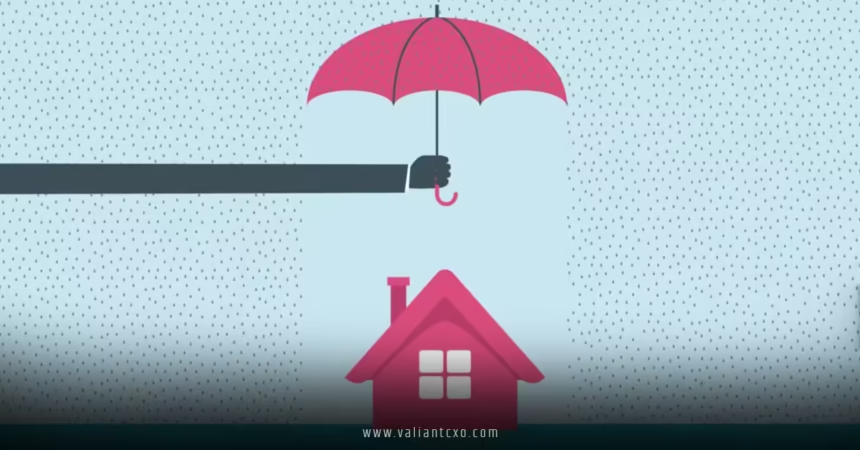The Future of Climate Insurance Bonds in the US is not just a financial trend—it’s a lifeline for a nation grappling with the escalating impacts of climate change. Imagine a world where hurricanes, wildfires, and floods are no longer just weather events but financial disasters that threaten entire communities. That’s the reality we’re facing, and climate insurance bonds, often called catastrophe bonds or “cat bonds,” are stepping into the spotlight as a critical tool to manage these risks. But what does this mean for insurers, investors, and everyday Americans? Let’s dive into the heart of this innovative financial instrument and explore how it’s shaping the future.
What Are Climate Insurance Bonds?
Picture a safety net, not for catching people, but for catching financial losses when Mother Nature unleashes her fury. Climate insurance bonds are financial instruments designed to transfer the risk of natural disasters from insurers to investors. Issued by insurance companies or public entities, these bonds raise capital that’s set aside to cover losses from specific climate-related events, like hurricanes or wildfires. If the disaster doesn’t happen, investors get their money back plus interest. But if a storm hits and losses exceed a predefined threshold, the bond’s principal is used to pay claims, and investors may lose their investment.
Why does this matter? In the US, where climate change is intensifying extreme weather, traditional insurance models are buckling under pressure. The Future of Climate Insurance Bonds in the US hinges on their ability to provide a buffer against these growing risks, offering a way to stabilize insurance markets while attracting investors seeking high yields.
How Do They Work?
Think of climate insurance bonds like a high-stakes bet on the weather. Insurers issue these bonds, and investors buy them, essentially agreeing to cover potential losses in exchange for attractive returns. The bonds are tied to specific “triggers”—say, a Category 4 hurricane hitting Florida or wildfires causing over $1 billion in damages. If the trigger isn’t met, investors get their principal back plus a juicy interest rate. But if disaster strikes, the funds go to the insurer to cover claims, and investors might take a hit.
This setup is a win-win when it works: insurers get protection without draining their reserves, and investors get a chance at returns uncorrelated with traditional markets. As climate risks grow, The Future of Climate Insurance Bonds in the US looks bright for those willing to navigate this unique market.
Why Are Climate Insurance Bonds Gaining Traction?
The US is no stranger to climate chaos. From California’s wildfires to Florida’s hurricanes, the financial toll of natural disasters is skyrocketing. In 2024 alone, insured losses from natural disasters hit $140 billion globally, with the US bearing a hefty share. Traditional insurance is struggling to keep up, with premiums soaring and some insurers pulling out of high-risk areas altogether. So, why are climate insurance bonds becoming the talk of the town?
Rising Climate Risks
Climate change isn’t just a distant threat—it’s here, and it’s expensive. Rising sea levels, stronger storms, and unpredictable wildfires are pushing insurance companies to rethink how they manage risk. The Future of Climate Insurance Bonds in the US is tied to this reality: as disasters become more frequent and severe, insurers need innovative ways to spread the risk. Cat bonds offer a solution by tapping into capital markets, allowing insurers to offload exposure to investors who are hungry for diversification.
Attractive Returns for Investors
Who doesn’t love a good return on investment? Climate insurance bonds often offer higher yields than traditional bonds, making them a magnet for investors. Because their performance is tied to natural events rather than stock market swings, they provide a hedge against economic volatility. In 2025, the cat bond market is projected to hit $50 billion, driven by demand from pension funds, hedge funds, and even retail investors. The Future of Climate Insurance Bonds in the US is fueled by this investor enthusiasm, as more players see the value in this uncorrelated asset class.
Public Sector Involvement
Governments are getting in on the action too. States like Florida and California, battered by climate disasters, are exploring cat bonds to protect public infrastructure and reduce taxpayer burdens. For example, the World Bank has issued bonds to cover disaster risks in vulnerable regions, and similar models are gaining traction in the US. By spreading risk to private investors, governments can avoid dipping into public funds when disaster strikes. This trend is a key driver in The Future of Climate Insurance Bonds in the US.
Challenges Facing Climate Insurance Bonds
Nothing’s perfect, right? While climate insurance bonds are a game-changer, they’re not without hurdles. Understanding these challenges is crucial to grasping The Future of Climate Insurance Bonds in the US.
Modeling Unpredictable Risks
Predicting the weather is tough; predicting its financial impact is even tougher. Climate insurance bonds rely on sophisticated catastrophe models to estimate risks, but climate change is rewriting the rulebook. Historical data is less reliable when storms are getting stronger and wildfires are burning hotter. Insurers and investors need cutting-edge models that account for these shifts, but even the best models have limitations. The Future of Climate Insurance Bonds in the US depends on improving these tools to keep risks manageable.
Greenwashing Concerns
Ever heard of greenwashing? It’s when something’s labeled “green” but doesn’t quite live up to the hype. Some worry that climate insurance bonds could fall into this trap if they’re not tied to truly sustainable outcomes. For instance, bonds that fund projects with vague environmental benefits might erode investor trust. Ensuring transparency and clear standards, like those set by the Climate Bonds Initiative, is critical to maintaining credibility in The Future of Climate Insurance Bonds in the US.
Accessibility for Smaller Players
Cat bonds aren’t exactly a mom-and-pop investment. They require deep pockets and expertise to navigate, which can exclude smaller insurers or investors. This high barrier to entry could limit the market’s growth, especially in regions where smaller insurers dominate. The Future of Climate Insurance Bonds in the US will need to find ways to make these instruments more accessible to democratize their benefits.
The Role of Technology in Shaping the Future
Technology is the unsung hero in The Future of Climate Insurance Bonds in the US. From AI-driven risk models to blockchain for transparency, tech is transforming how these bonds are created and managed.
Advanced Risk Modeling
Imagine a crystal ball that predicts hurricanes with pinpoint accuracy. We’re not there yet, but advanced risk modeling is getting close. Insurers are using AI and machine learning to analyze vast datasets, from satellite imagery to climate projections, to better estimate risks. These tools help price bonds more accurately, ensuring that investors and insurers alike are on the same page. As technology evolves, The Future of Climate Insurance Bonds in the US will rely on these innovations to stay ahead of climate risks.
Parametric Insurance Integration
Ever wished for an insurance payout that didn’t involve endless paperwork? Parametric insurance, often paired with cat bonds, is making that a reality. Instead of assessing actual damages, parametric bonds pay out based on predefined triggers, like wind speed or rainfall levels. This speeds up payouts and reduces disputes, making them a perfect fit for climate insurance bonds. The Future of Climate Insurance Bonds in the US will likely see more parametric structures, especially in high-risk areas.
Blockchain for Transparency
Trust is everything in finance, and blockchain is here to deliver. By recording bond terms and payouts on a secure, transparent ledger, blockchain can reduce fraud and boost investor confidence. Some insurers are already experimenting with blockchain for cat bonds, and as adoption grows, it could become a cornerstone of The Future of Climate Insurance Bonds in the US.
The Economic and Social Impact
Climate insurance bonds aren’t just about dollars and cents—they’re about people and communities. The Future of Climate Insurance Bonds in the US has far-reaching implications for how we live and rebuild in a warming world.
Stabilizing Insurance Markets
In places like California, where wildfires have driven insurers away, homeowners are facing “insurance deserts” where coverage is scarce or unaffordable. Climate insurance bonds can help stabilize these markets by giving insurers the financial cushion they need to keep offering policies. This means more families can protect their homes without breaking the bank. The Future of Climate Insurance Bonds in the US is about keeping insurance accessible, even in the face of climate chaos.
Supporting Resilient Communities
When disaster strikes, the recovery process can make or break a community. Climate insurance bonds ensure that funds are available quickly, helping communities rebuild stronger and smarter. For example, bonds could fund upgrades to Fortified building standards, which make homes more resilient to storms and fires. By investing in resilience, The Future of Climate Insurance Bonds in the US can help communities bounce back faster.
Economic Diversification
For investors, climate insurance bonds are like a breath of fresh air in a crowded market. Their low correlation with stocks and traditional bonds makes them a valuable tool for diversification. As more investors jump in, the market grows, creating new opportunities for economic growth. The Future of Climate Insurance Bonds in the US could reshape investment portfolios, making them more resilient to economic and climate shocks.
Policy and Regulation: The Road Ahead
Governments and regulators have a big role to play in The Future of Climate Insurance Bonds in the US. Without clear policies and standards, the market could stumble.
Encouraging Innovation
State regulators can encourage insurers to experiment with cat bonds by streamlining approval processes and offering incentives. For example, Florida’s My Safe Florida Home program has shown how public-private partnerships can reduce risk and lower premiums. Similar initiatives could boost The Future of Climate Insurance Bonds in the US by making them more attractive to issuers and investors.
Addressing Affordability
Let’s face it: rising insurance premiums are hitting homeowners hard. Regulators need to balance the need for risk-based pricing with affordability concerns. Climate insurance bonds can help by spreading risk, but policymakers must ensure that the benefits trickle down to consumers. The Future of Climate Insurance Bonds in the US depends on policies that prioritize fairness and accessibility.
Global Collaboration
Climate change doesn’t respect borders, and neither should solutions. The US can learn from global leaders like the World Bank, which has issued cat bonds for disaster-prone regions. By collaborating with international partners, the US can adopt best practices and scale up The Future of Climate Insurance Bonds in the US.
Conclusion
The Future of Climate Insurance Bonds in the US is a story of innovation, resilience, and adaptation. As climate change reshapes our world, these bonds offer a powerful tool to manage financial risks, stabilize insurance markets, and support vulnerable communities. From advanced risk modeling to parametric triggers, technology is paving the way for a more robust market. But challenges like greenwashing and accessibility must be addressed to unlock their full potential. For investors, insurers, and policymakers, climate insurance bonds are a chance to build a more resilient future—one where we’re not just surviving climate change, but thriving despite it. So, let’s embrace this opportunity and shape a future where financial security and environmental sustainability go hand in hand.
FAQs
1. What are climate insurance bonds, and why are they important for The Future of Climate Insurance Bonds in the US?
Climate insurance bonds, or cat bonds, are financial instruments that transfer the risk of natural disasters from insurers to investors. They’re important because they help insurers manage the growing financial risks of climate change, ensuring that coverage remains available in high-risk areas.
1. What are climate insurance bonds, and why are they important for The Future of Climate Insurance Bonds in the US?
Climate insurance bonds, or cat bonds, are financial instruments that transfer the risk of natural disasters from insurers to investors. They’re important because they help insurers manage the growing financial risks of climate change, ensuring that coverage remains available in high-risk areas.
2. How do climate insurance bonds benefit investors?
These bonds offer high yields and are uncorrelated with traditional markets, making them a great diversification tool. Investors can earn attractive returns while supporting climate resilience, a key factor in The Future of Climate Insurance Bonds in the US.
3. Can climate insurance bonds help lower insurance premiums for homeowners?
By spreading risk to investors, these bonds can stabilize insurance markets, potentially reducing premiums in high-risk areas. However, their impact depends on how insurers and regulators implement them in The Future of Climate Insurance Bonds in the US.
4. What challenges could affect The Future of Climate Insurance Bonds in the US?
Challenges include inaccurate risk models, greenwashing concerns, and limited accessibility for smaller players. Addressing these will be crucial for the market’s growth and credibility.
5. How can technology shape The Future of Climate Insurance Bonds in the US?
Technologies like AI, parametric triggers, and blockchain are enhancing risk modeling, speeding up payouts, and ensuring transparency, making climate insurance bonds more effective and trustworthy.
For More Updates !! : valiantcxo.com


